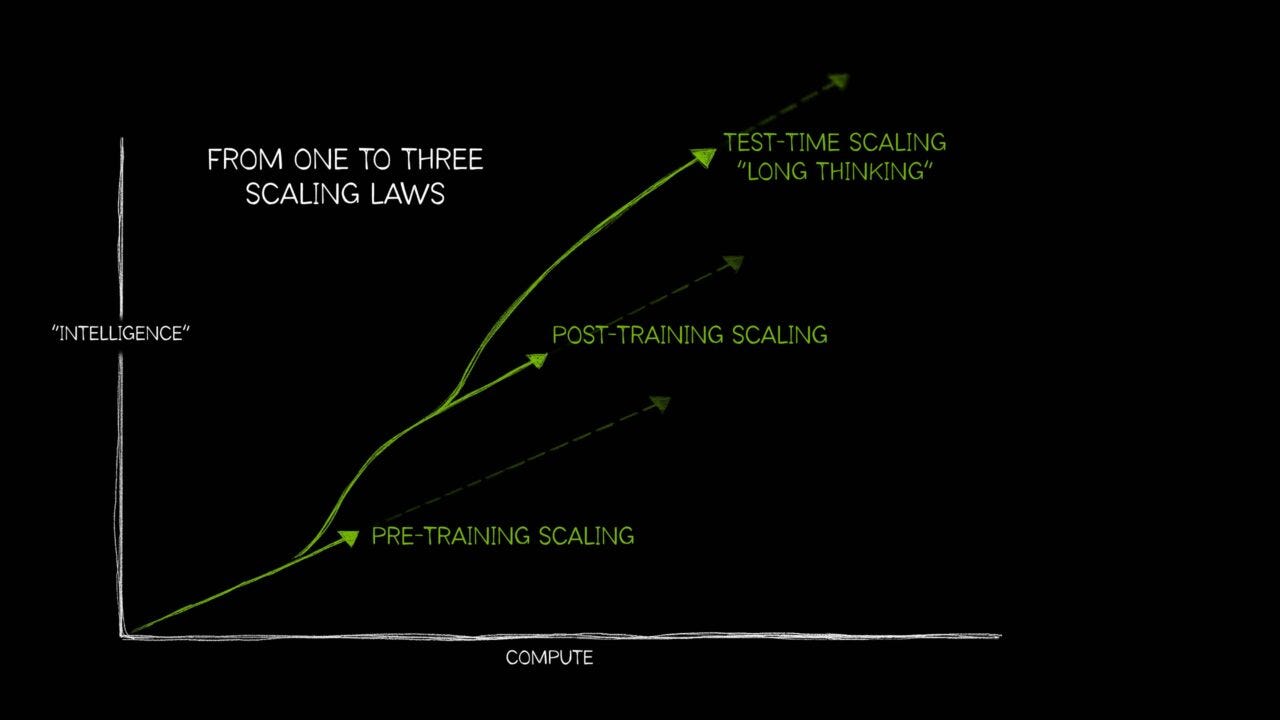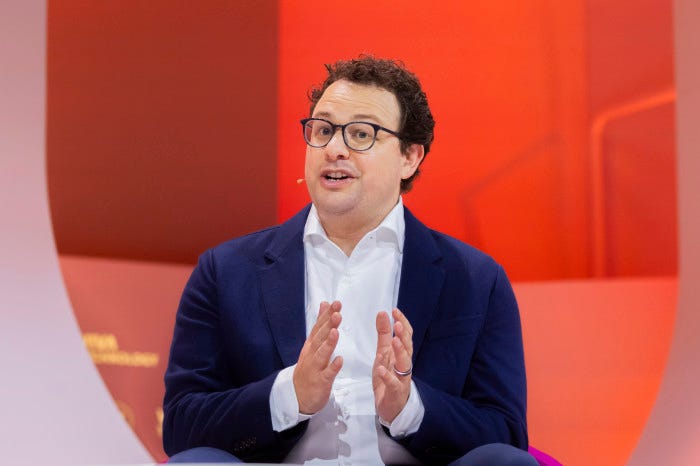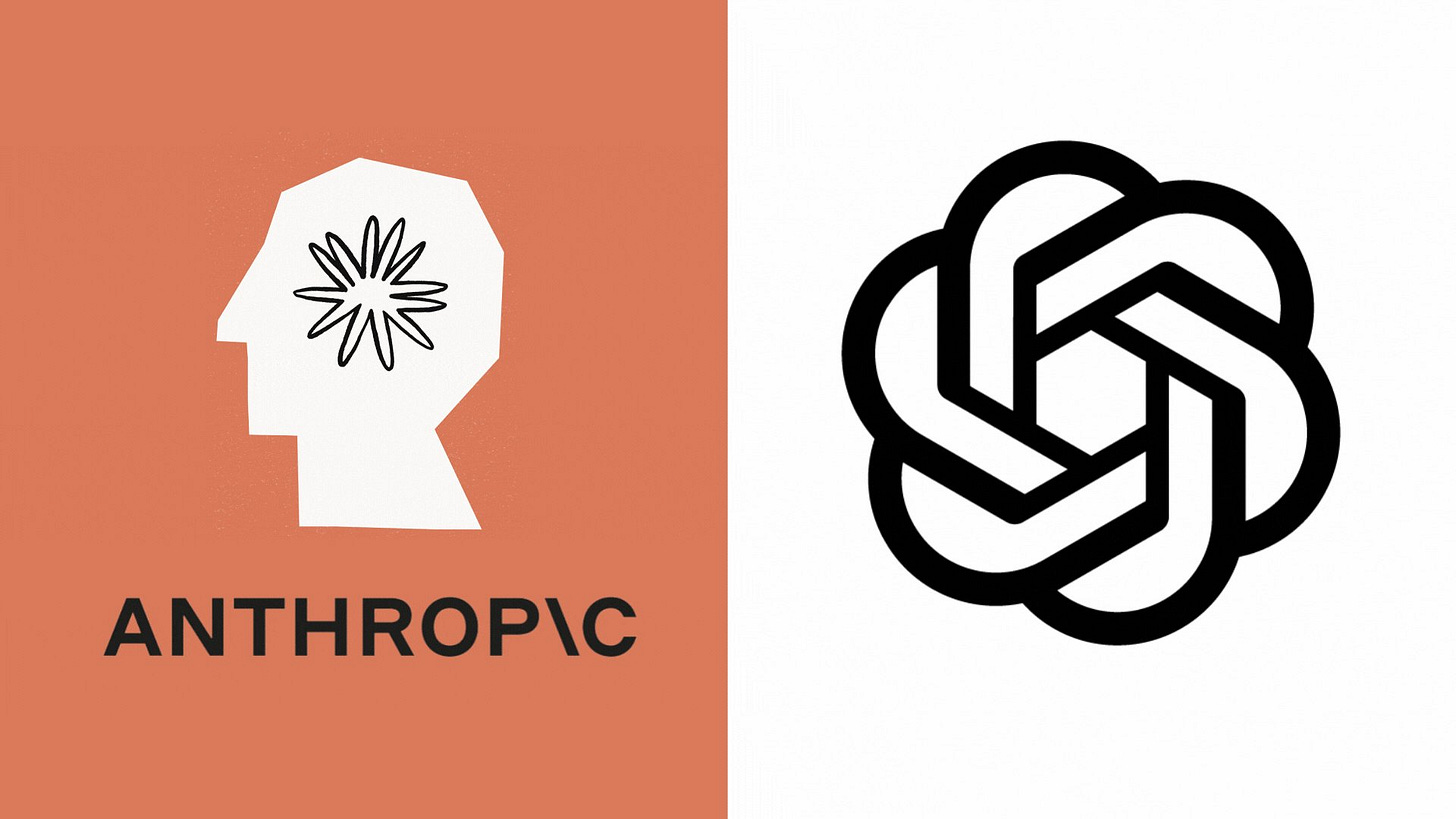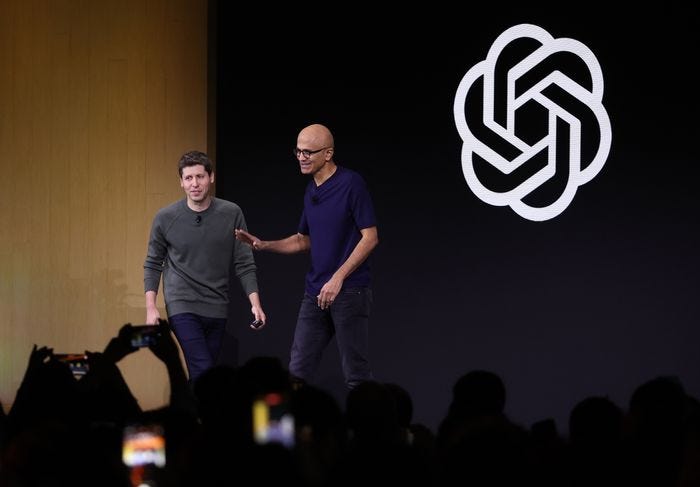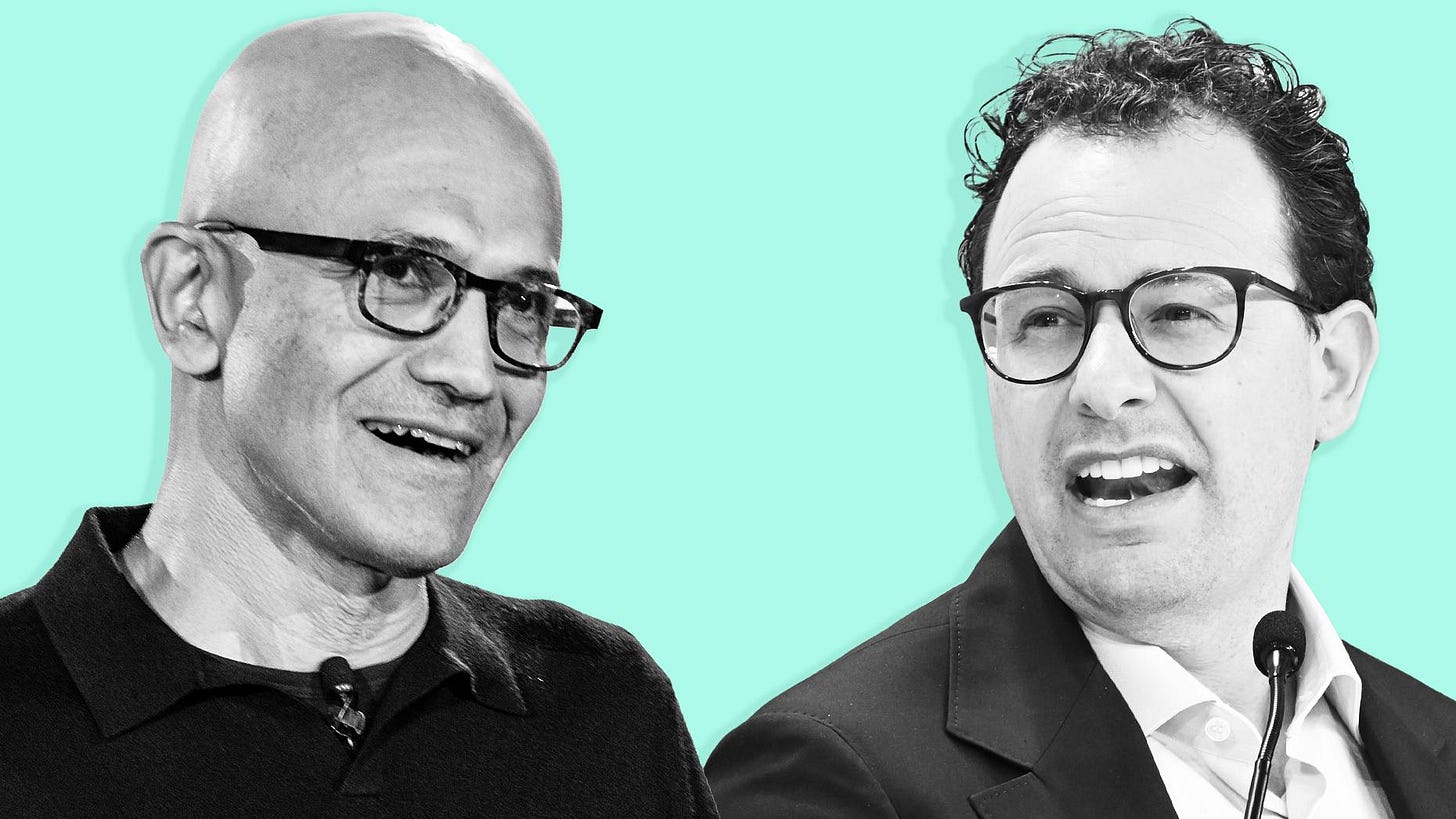
AI: How Anthropic Zags while OpenAI Zigs. RTZ #887
Looks like ‘Coke vs Pepsi’ at first glance. But less so at closer look.
It’s been clear now for a while that OpenAI and Anthropic are now the two largest LLM AI companies in the US. Born off common co-founders that each decided to go their separate ways.
And that are both driving rapid and frenetic innovation taking their models into AI Reasoning, AI Agents, and myriad other AI Applications to come at scale.
Along with other LLM AI companies of course like Google, Meta, Elon’s xAI/Grok, and many others around the world. Both are closed vs increasingly open source LLM AI companies.
And OpenAI has been on an execution tear of late as I’ve discussed, especially as its splits away even more from its long-time core partner Microsoft and its Azure AI Cloud infrastructure.
Anthropic meanwhile has been going the other way, getting closer to their core investors Amazon and Google, by integrating and distributing its core products with their rapidly scaling AI data center infrastructure, AND customizing its core LLM AI products with those partners. While accentuating its AI Safety cred over OpenAI from the beginning.
Anthropic for example just leveraged its relationship with Google integrating the latter’s TPU AI Infrastructure into Gigawatt plus powered AI Data Centers that’ll cost tens of billions and take years to stand up at scale.
This echoes OpenAI’s recent deals with Nvidia, Oracle, Broadcom, AMD and others for training and inference base loads at scale in multi-gigawatt data centers approaching a trillion dollars plus over time. Separately, I’ve discussed how Google has also leveraged its TPU infrastructure with OpenAI to a lesser extent.
It seems like Coke vs Pepsi or Hertz vs Avis, but not really. OpenAI and Antrhopic are addressing different markets for their core AI products and capabilities. And that’s an important distinction to understand at this early stage of this AI Tech Wave.
WSJ outlines each company’s position in “OpenAI’s Less-Flashy Rival Might Have a Better Business Model”:
“Anthropic, backed by Amazon and Google, is focusing on corporate customers rather than the mass market”.
“OpenAI recently inked hundreds of billions of dollars of deals to build data centers filled with chips it hopes will further its AI dominance. But one of its rivals—the Amazon AMZN 1.41%increase; green up pointing triangle-backed developer Anthropic—has a clearer path to making a sustainable business out of AI.”
On the surface to most mainstream observers, the two companies look more alike than not:
“Anthropic and OpenAI do similar things: They develop advanced AI models upon which chatbots, image generators and a host of other AI tools are based.”
“But they have approached the question of how to generate revenue—and, one would hope, profit—from AI in different ways.”
OpenAI currently Zigs away under founder/CEO Sam Altman’s frenetic execution:
“Outside of OpenAI’s close partnership with Microsoft, which integrates OpenAI’s models into Microsoft’s software products, OpenAI mostly caters to the mass market. Its user base is, in large part, replacing search-engine queries with bot conversations, which has proved immensely popular. ChatGPT had more than 800 million weekly users as of this month, according to the company, which has helped OpenAI reach an annual revenue run rate of around $13 billion, around 30% of which it says comes from businesses.”
Anthropic though is zagging on a less consumer facing trajectory:
“Anthropic has generated much less mass-market appeal. The company has said about 80% of its revenue comes from corporate customers. Last month it said it had some 300,000 of them.”
“That focus has helped put Anthropic ahead of OpenAI among business users. Its cutting-edge Claude language models have been praised for their aptitude in coding: A July report from Menlo Ventures—which has invested in Anthropic—estimated via a survey that Anthropic had a 42% market share for coding, compared with OpenAI’s 21%. Anthropic is also now ahead of OpenAI in market share for overarching corporate AI use, Menlo Ventures estimated, at 32% to OpenAI’s 25%.”
With growing gobs of revenues for both at shocking pace:
“Anthropic is also surprisingly close to OpenAI when it comes to revenue. The company is already at a $7 billion annual run rate and expects to get to $9 billion by the end of the year—a big lead over its better-known rival in revenue per user.”
“Both companies have backing in the form of investments from big tech companies—Microsoft for OpenAI, and a combination of Amazon and Google for Anthropic—that help provide AI computing infrastructure and expose their products to a broad set of customers.”
And here’s where the Zig Zags become more differentiated, as each one leverages companies across different parts of the AI Tech Stack in their own way:
“But Anthropic’s growth path is a lot easier to understand than OpenAI’s. Corporate customers are devising a plethora of money-saving uses for AI in areas like coding, drafting legal documents and expediting billing. Those uses are likely to expand in the future and draw more customers to Anthropic, especially as the return on investment for them becomes easier to measure.”
“Demonstrating how much demand there is for Anthropic among corporate customers, Microsoft in September said Anthropic’s leading language model, Claude, would be offered within its Copilot suite of software despite Microsoft’s ties to OpenAI.”
OpenAI is on a consumer trajectory that may be a mirage longer term, especially as core compeitors like Google and Apple really step on the AI gas.
“The mass-market consumer revenue model is more nebulous. OpenAI has yet to settle on a way to make money from it beyond charging subscription fees. It has a $20-a-month “plus” plan and $200-a-month “pro” plan for consumers, in addition to a free tier that comes with limits on queries and runs more slowly. Such subscription fees aren’t enough to offset the massive cost of developing and rolling out cutting-edge AI.”
OpenAI of course realizes this, thus leading to a management and cultural transformation borrowing from Mag 7s like Meta, as I discussed yesterday:
“The obvious revenue stream for OpenAI’s consumer business will be advertising. But it isn’t clear how OpenAI or its competitors would inject ads into chatbots. It won’t be as straightforward as search ads; users wouldn’t likely welcome brand placement in their bot chats. And as it looks for an ad-revenue model, OpenAI is in the unenviable position of competing with Google, which has its own suite of mass-market AI tools and far deeper roots in advertising.”
This is not to say OpenAI is not growing directly with businesses. They’re actually outpacing their erstwhile partner Microsoft here:
“Of course, OpenAI is making a strong appeal to business customers too, both through Microsoft and on its own. And there is an argument that OpenAI’s vast user base and exposure to a wider set of queries will give it an edge among corporate users.”
But there are potential risks:
“Yet there is also a possibility that OpenAI’s mass-market appeal becomes a turnoff for corporate customers who want AI to be more boring and useful than fun and edgy. OpenAI recently said it would begin allowing adults to have erotic conversations with ChatGPT, and has urged for a hands-off approach to AI regulation. Even if the company makes its products more constrained in corporate contexts, its freewheeling reputation seems likely to limit its inroads.”
“For all of OpenAI’s spending, meanwhile, Anthropic has shown it is as good or better in AI arenas that companies care about. Vals AI, a startup that evaluates AI models, ranks the latest version of Anthropic’s large language model Claude as top in a business-focused benchmark that brings together finance, legal and coding tasks.”
Anthropic for now is clear-eyed about their direct business customers, via their partners Amazon, Google, and now Microsoft amongst others globally.
“Anthropic is laser-focused on these agentic enterprise use cases and they’re playing a very competitive game with OpenAI right now,” said Rayan Krishnan, a co-founder of Vals.”
“OpenAI and its chief-executive-slash-showman Sam Altman have been hogging the AI spotlight lately. Anthropic’s business prospects—and the shrewdness of its main investors, Amazon and Google—may be more deserving of notice.”
The full piece has useful charts and graphs that illustrate some of these points clearly.
But the overall message is that both companies though similar in many ways in the LLM AI space, have diverging strategies for AI Scale. And that’s worth studying closely at this stage of the AI Tech Wave. Stay tuned.
(NOTE: The discussions here are for information purposes only, and not meant as investment advice at any time. Thanks for joining us here)


